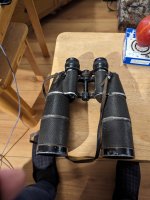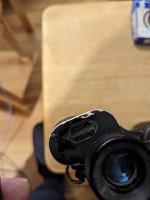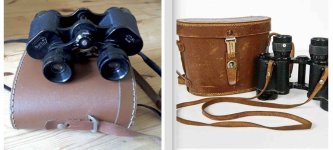Hello. I have recently acquired a pair of binoculars. They have the name SAARBOURG. They are also marked OPTIC MODERN..16 x 50...COATED LENSES...They are also marked. MADE IN FRANCE..
They are longer than normal at 23 ,cm
Please can any tell me anything at all about these binoculars
Thank you
Alan
They are longer than normal at 23 ,cm
Please can any tell me anything at all about these binoculars
Thank you
Alan











